The Perfect Time to Conquer Bilingualism

The Perfect Time to Conquer Bilingualism: Unraveling the Best Time to Learn a Second Language
We, homeschooling parents, many following the Waldorf methods, might appreciate this example.
Imagine trying to grow an apple tree. If you plant the seed too late, chances are, it may not thrive as much compared to planting it at the optimum growing season. Similarly, learning a second language is like sowing a seed - timing is crucial. In this blog post, I will delve into the recommended timing for successful language acquisition, backed by real-life examples, scientific evidence, and expert insights.
Planting the Seed Early: The Science behind Early Language Learning
How does language acquisition work with our brain at a young age?
Language acquisition is similar to a child learning to walk. As scientist Patricia Kuhl's research observed, babies and toddlers are linguistic geniuses, capable of learning to distinguish the phonetic contrasts of a second language easily. This period, often referred to as the 'critical period,' ends around the age of 7.

Does it mean that an 8-year-old cannot learn a new language?
Absolutely not.
But what can happen is that the 8-year-old child might have more difficulties discerning sounds in the second language, for example, since it has been found by Khul’s team that “older children lose their sensitivity to distinctions that are not used in their native language”.
I have personally seen this with some of my students. While we all have our talents and for some, it is easier to listen to sounds and music than to others, there is a critical period to have that talent developed easily, even if that talent is not natural to you.
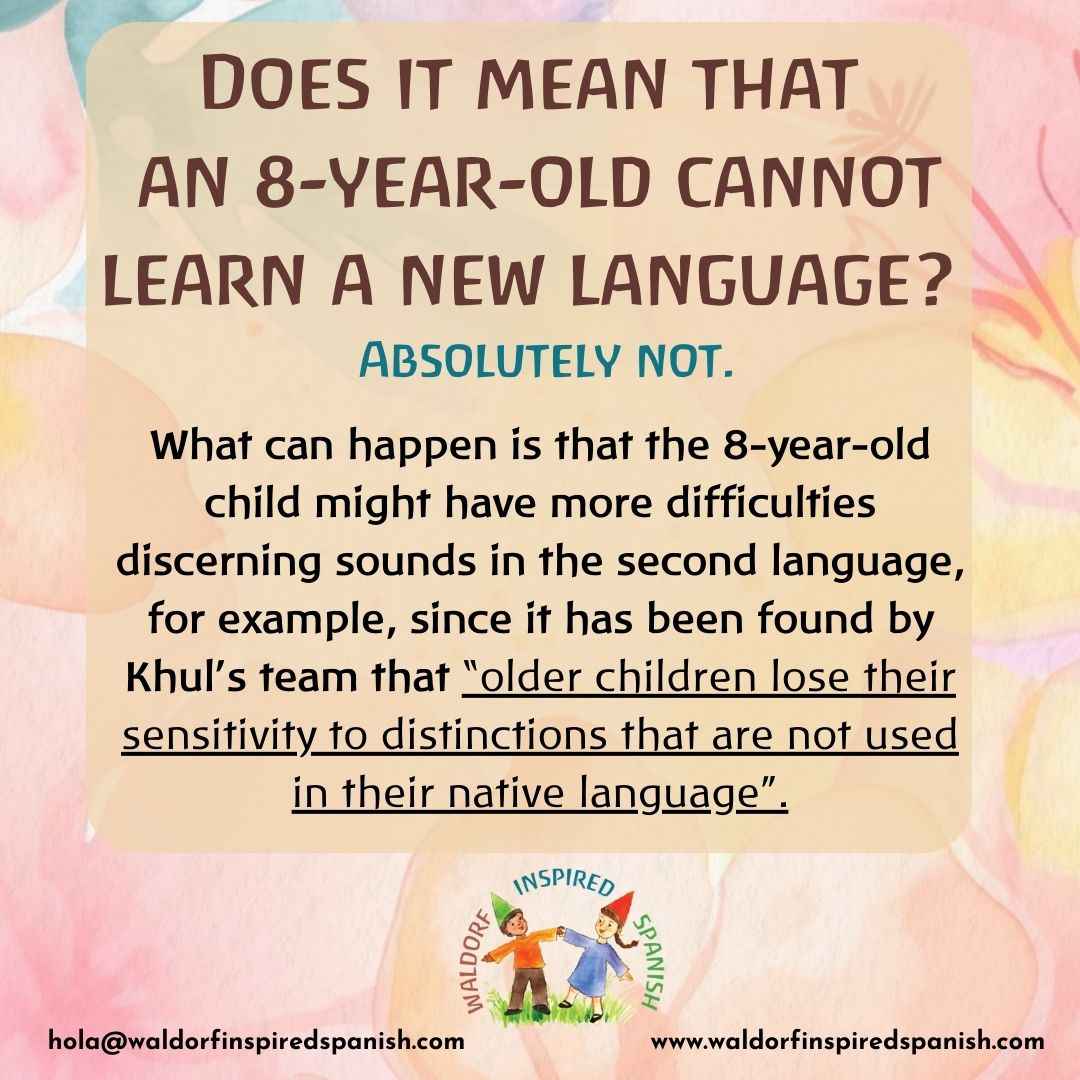
The later you start developing it, the more difficulties you might find.
A different recent study has found that “earlier age of second language learning induces more robust speech encoding in the auditory brainstem in adults, independent of the amount of language exposure during early childhood”.
As a result, exposure to the language at an early stage in life will help in adulthood by providing an easier time understanding sounds and recognizing aspects of the language related to the auditory sense, like the melody of a language: one of the first steps to start understanding a language.
What I have seen in my students is that early exposure to the language has resulted in a higher level of understanding of that language and easiness to even understand other languages later, easier and faster acquisition of the language as they grow up with that exposure, and easiness to create sounds that belong to that language. I call it “softening the earing”.
While those not exposed to another language had a “hard ear” and lack of flexibility in the understanding of the language and took much longer to “soften” that ear, to start hearing the sounds and the melody of the language, those exposed, had a much easier time decoding it, pronouncing it and remembering it.
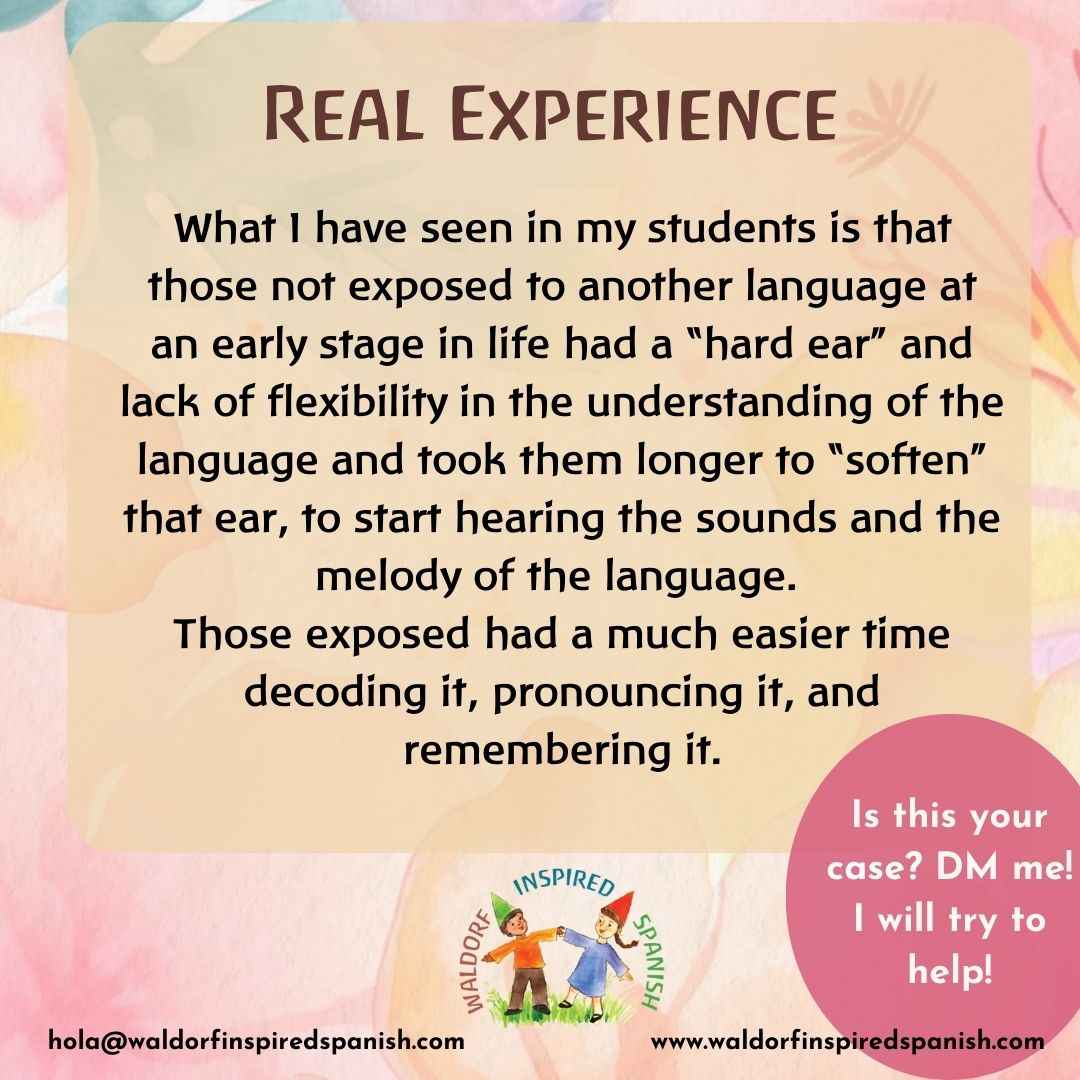
What is the best way to introduce a language in the early ages?
In all cases by increasing the exposure to the second language as much as possible.
Make sure the language is present in their lives and it is “alive”, meaning, it develops in conversations, in context when possible, and, it does not stay stagnant, always saying the same sentences, with the same vocabulary.
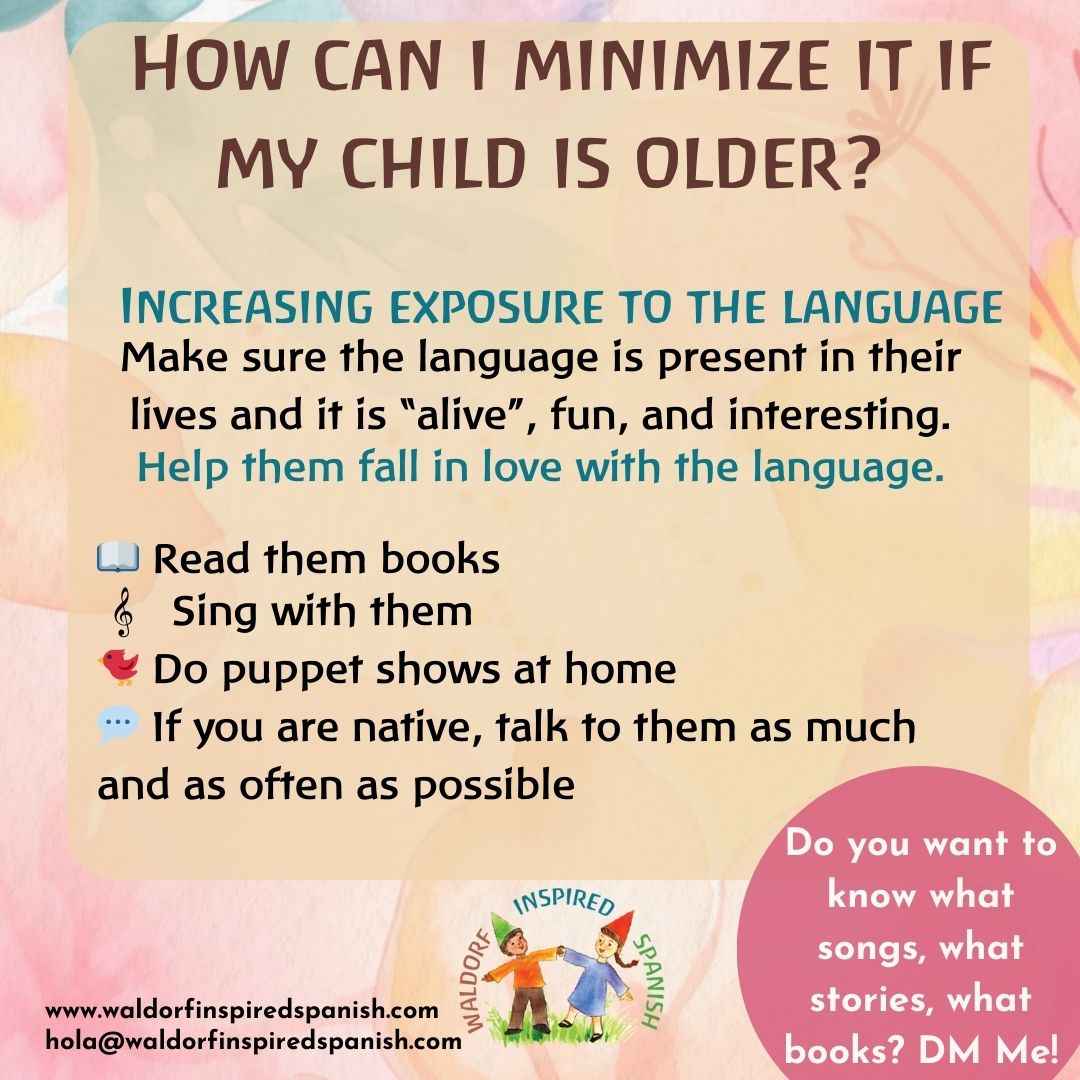
Specifically, if you are a Spanish-native speaker, speak to the children in Spanish as often as possible and include them in conversations. Ask them to answer you in Spanish, and provide them with the words when they don’t have them.
If your level is not native but you have learned it in the past and you feel capable of reading a book, go ahead and start reading books in Spanish to your child the same way you would read them in English. Stop to introduce words, show the pictures, and encourage them to pronounce those words if they are already speaking. Introduce those words in your daily life in Spanish to promote long-term memory.
If you do not know the language but you want your children will speak it, find a good program that will allow you to learn together, if you have that option. Sign them up for classes when they are old enough, and make sure they listen to people reading them stories in Spanish or singing them songs. If you can, learn a few songs and sing them at home. While they will not reach bilingualism by singing songs, you are giving them a heads up in the auditory department, you will create beautiful memories, they will learn vocabulary that they might never forget, and they will learn to love Spanish. That is already a great heads up in learning a language, to love it!
Those are already big steps forward.
I started to teach my first Spanish when he was born. I was living in Canada and no one else spoke Spanish around us. I started by doing what I mentioned above and, even when I was exhausted, I still spoke to him in Spanish. My husband supported me hugely, especially when I was so tired that I would have chosen to speak only in English, so I did not have to repeat myself so my husband would understand me.
We always brought books from Spain, sometimes we paid a huge amount of money for delivery, so I could have books to read to him in Spanish or if we would travel to Spain we would always bring an empty suitcase that would fill up with Spanish materials to teach him at home.
At one point, I started to create puppet shows at home. The main reason was that I needed to expose him to conversations with more people than just “I” and “You” which were our regular conversations. I wanted to expand his vocabulary and tenses so I could speak about past, present, and future.
That is how I developed what I later called “The Waldorf Inspired Spanish Circle Time”.
Through puppet shows, he learned the language, he learned to love it and, until today, it is a highlight in our family and homeschooling.
If you would like a program that helps you bring a gentle but effective and fun approach to learning Spanish as a family, try our Waldorf-Inspired Spanish Circle Time.
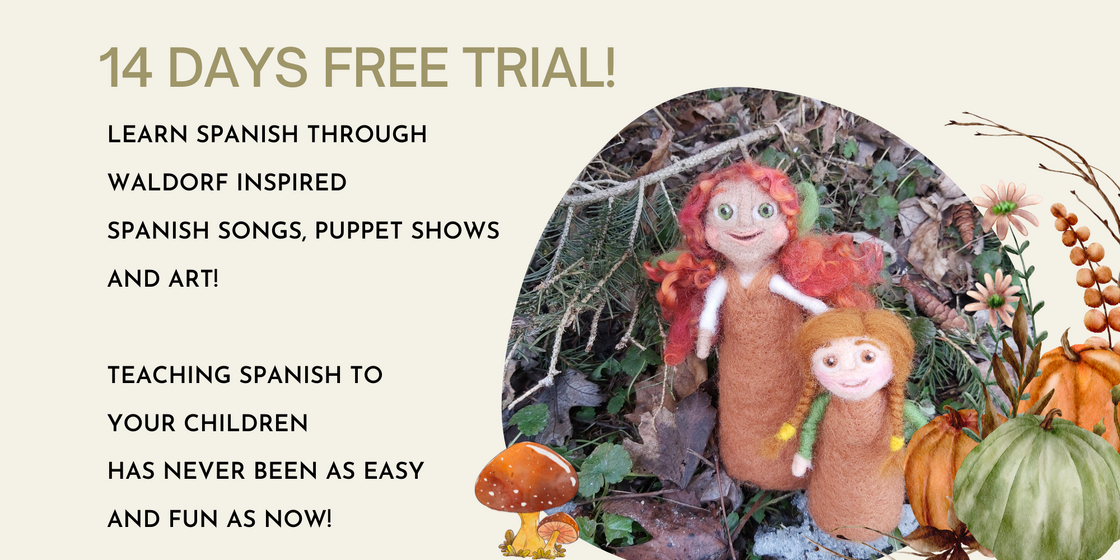
Try two weeks free here!

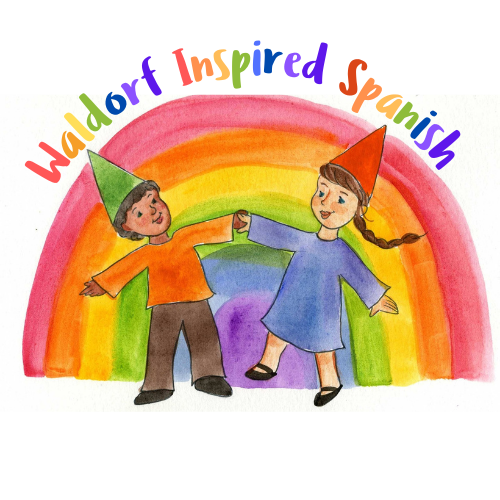
0 comments
Leave a comment
Please log in or register to post a comment